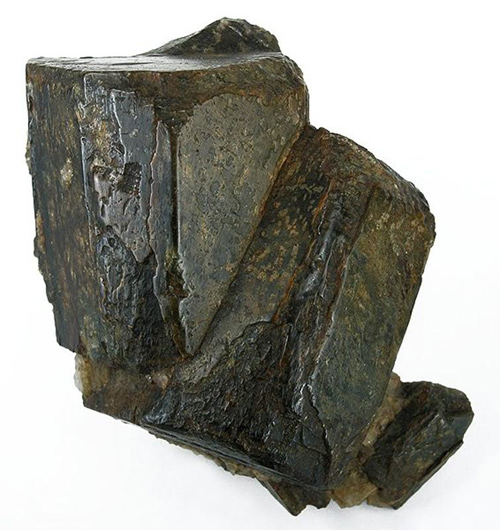The Mineral cordierite

Cordierite is a strongly
pleochroic mineral, and its color will be noticeably different when viewed at different angles. It is one of the few minerals that exhibits such strong
pleochroism, and is the most well-known mineral displaying this optical property. In its most typical habit, when a transparent Cordierite specimen is viewed through one angle, it will be violet-blue to blue, and when shifted it will turn gray or yellowish.
Cordierite is named after Louis Cordier (1777-1861), a French
geologist and
mineralogist who was a founder of the French Geological Society.
For additional information, see the gemstone section on Iolite.
Chemical Formula
Mg2Al4Si5O18
Color
Light to dark blue, purplish-blue, brown, yellow, gray. Rarely red to brownish-red. Highly pleochroic, showing a different color when rotated on an angle.
Crystal System
Orthorhombic
Properties
Streak
Colorless |
Hardness
7 - 7.5 |
Transparency
Transparent to opaque |
Specific Gravity
2.6 - 2.7 |
Luster
Vitreous |
Cleavage
3,1 |
Fracture
Conchoidal to uneven |
Tenacity
Brittle |
Crystal Habits
Crystals, which are uncommon, are wide and stubby or prismatic. Crystals will usually form in a pseudohexagonal shape, and frequently have etches or striations. Cordierite is most often grainy, massive, and in unshaped fragments. It is also found as rounded waterworn pebbles.
Varieties
-
Gem form of Cordierite. May also be used as a synonym for Cordierite.
Uses
The transparent gem variety of Cordierite is known as Iolite, and has recently become a mainstream gemstone. Due to its good color and hardness, it is used as an affordable replacement to Sapphire, and is used in ring, earrings, and as pendants.
Noteworthy Localities
Very large,
altered Cordierite crystals once came from the Silberberg Mine, Bodenmais, Bavaria, Germany. Brownish-red to tan microcrystals are found in Eifel Mountains of Germany at the Bellerberg volcano in Ettringen. Large, well-formed crystals of Cordierite with very good color were recently found in Søndeled, Risør, Aust-Agder, Norway. Also in Norway is Tvedestrand, Aust-Agder, where Cordierite occurs in a
Quartz matrix.
Trapiche-shaped flowers formed from
Muscovite pseudomorphs after Cordierite are well known from Kameoka City, Kyoto Prefecture, Japan. Gem-quality Cordierite is found in several of the Madagascar
pegmatites, especially in the Tranomaro area, Tuléar Province. Gem crystals also occur in Babati, Manyara Region, Tanzania; and across the Atlantic at Virgolândia, Doce Valley, Minas Gerais, Brazil.
In the U.S., the most prominent localities are in New England. Large, opaque crystals of excellent form are found in a
Talc quarry in Richmond, Cheshire Co., New Hampshire. Bluish-gray Cordierite has come from Haddam, Middlesex Co., Connecticut; and a deep blue Cordierite from Hungry Hill, Guilford, New Haven Co., Connecticut.
Common Mineral Associations
Quartz, Biotite, Almandine, Andalusite, Corundum, Talc, Anthophyllite
Distingushing Similar Minerals
Zoisite - The variety Tanzanite can appear similar, although it has perfect cleavage and is only known from the Arusha area of Tanzania.